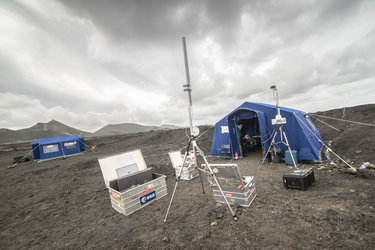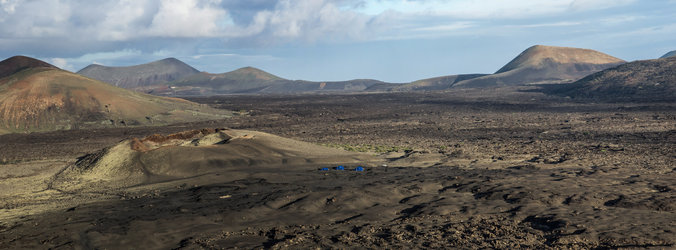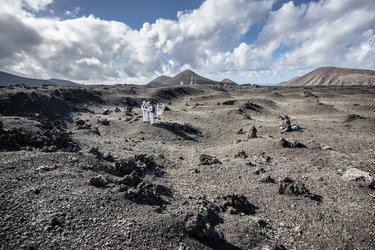Accept all cookies Accept only essential cookies See our Cookie Notice

About ESA
The European Space Agency (ESA) is Europe’s gateway to space. Its mission is to shape the development of Europe’s space capability and ensure that investment in space continues to deliver benefits to the citizens of Europe and the world.
Highlights
ESA - United space in Europe
This is ESA ESA facts Member States & Cooperating States Funding Director General Top management For Member State Delegations European vision European Space Policy ESA & EU Space Councils Responsibility & Sustainability Annual Report Calendar of meetings Corporate newsEstablishments & sites
ESA Headquarters ESA ESTEC ESA ESOC ESA ESRIN ESA EAC ESA ESAC Europe's Spaceport ESA ESEC ESA ECSAT Brussels Office Washington OfficeWorking with ESA
Business with ESA ESA Commercialisation Gateway Law at ESA Careers Cyber resilience at ESA IT at ESA Newsroom Partnerships Merchandising Licence Education Open Space Innovation Platform Integrity and Reporting Administrative Tribunal Health and SafetyMore about ESA
History ESA Historical Archives Exhibitions Publications Art & Culture ESA Merchandise Kids Diversity ESA Brand Centre ESA ChampionsLatest
Space in Member States
Find out more about space activities in our 23 Member States, and understand how ESA works together with their national agencies, institutions and organisations.
Science & Exploration
Exploring our Solar System and unlocking the secrets of the Universe
Go to topicAstronauts
Missions
Juice Euclid Webb Solar Orbiter BepiColombo Gaia ExoMars Cheops Exoplanet missions More missionsActivities
International Space Station Orion service module Gateway Concordia Caves & Pangaea BenefitsSpace Safety
Protecting life and infrastructure on Earth and in orbit
Go to topicAsteroids
Asteroids and Planetary Defence Asteroid danger explained Flyeye telescope: asteroid detection Hera mission: asteroid deflection Near-Earth Object Coordination CentreSpace junk
About space debris Space debris by the numbers Space Environment Report In space refuelling, refurbishing and removingSafety from space
Clean Space ecodesign Zero Debris Technologies Space for Earth Supporting Sustainable DevelopmentLatest
Applications
Using space to benefit citizens and meet future challenges on Earth
Go to topicObserving the Earth
Observing the Earth Future EO Copernicus Meteorology Space for our climate Satellite missionsCommercialisation
ESA Commercialisation Gateway Open Space Innovation Platform Business Incubation ESA Space SolutionsLatest
Enabling & Support
Making space accessible and developing the technologies for the future
Go to topicBuilding missions
Space Engineering and Technology Test centre Laboratories Concurrent Design Facility Preparing for the future Shaping the Future Discovery and Preparation Advanced Concepts TeamSpace transportation
Space Transportation Ariane Vega Space Rider Future space transportation Boost! Europe's Spaceport Launches from Europe's Spaceport from 2012Latest

Pangaea-X Moon base
Thank you for liking
You have already liked this page, you can only like it once!
The technology-focused extension of the Pangaea geology field course, Pangaea-X, is in full swing this week on Lanzarote, part of the Canary Islands. The test campaign combines geology and space exploration with high-tech equipment to prepare humans for extra-terrestrial terrains.
Over the course of the week ESA astronaut Matthias Maurer, scientists, operations experts and engineers will work side-by-side on eight experiments and technology demonstrations to advance European know-how of human and robotic mission operations.
Known as the island of a thousand volcanoes, Lanzarote was chosen because of its geological similarity with Mars such as a volcanic origin, mild sedimentary processes owing to a dry climate, little vegetation and a well-preserved landscape. It is the perfect setting to test the best way for astronauts to take rock samples of the terrain.
Communications delays that are as much a part of space missions as sampling and scientific objectives will also be included in the campaign. Astronauts operating rovers on the surface of the Moon, for example, must contend with low-quality links and delays in space.
One of the experiments taking place this week is called Analog-1 and will test the science, operations and communications aspects of an exploratory mission.
From Lanzarote Matthias will drive a rover located at ESA’s main technology centre in The Netherlands.
A team of scientists will advise Matthias on the most interesting samples from a scientific point of view. He will use a tool that integrates real-time positioning, data sharing, voice chat and much more. This Electronic Field Book is an all-in-one, easy-to-use and plug-and-play device ‘made in ESA’.
The dry-run is a precursor to the same experiment that ESA astronaut Luca Parmitano will carry out next year but this time from the International Space Station, taking Moon-targeted operations out into space. Humankinds’s only orbital outpost in space is an excellent stand-in for orbital platforms around the Moon, allowing humans to test the waters for future exploration.
The International Space Station has a long history of being used as a test-bed for exploration techniques and technology. ESA has been running experiments controlling robots on Earth from space for over five years and 20 November 2018 marks 20 years of collaboration on this greatest international project of all time. In celebration, take a look back at 20 of our most memorable moments on the International Space Station. Eager to take part in celebrations online? Share your most memorable Space Station moments, photos or footage using hashtag #SpaceStation20th.
-
CREDIT
ESA–A. Romeo -
LICENCE
ESA Standard Licence

Pangaea-X mission control

Moonwalk in Lanzarote

Moon panorama on Earth

Pangaea-X test campaign – gearing up to explore othe…















 Germany
Germany
 Austria
Austria
 Belgium
Belgium
 Denmark
Denmark
 Spain
Spain
 Estonia
Estonia
 Finland
Finland
 France
France
 Greece
Greece
 Hungary
Hungary
 Ireland
Ireland
 Italy
Italy
 Luxembourg
Luxembourg
 Norway
Norway
 The Netherlands
The Netherlands
 Poland
Poland
 Portugal
Portugal
 Czechia
Czechia
 Romania
Romania
 United Kingdom
United Kingdom
 Slovenia
Slovenia
 Sweden
Sweden
 Switzerland
Switzerland

























